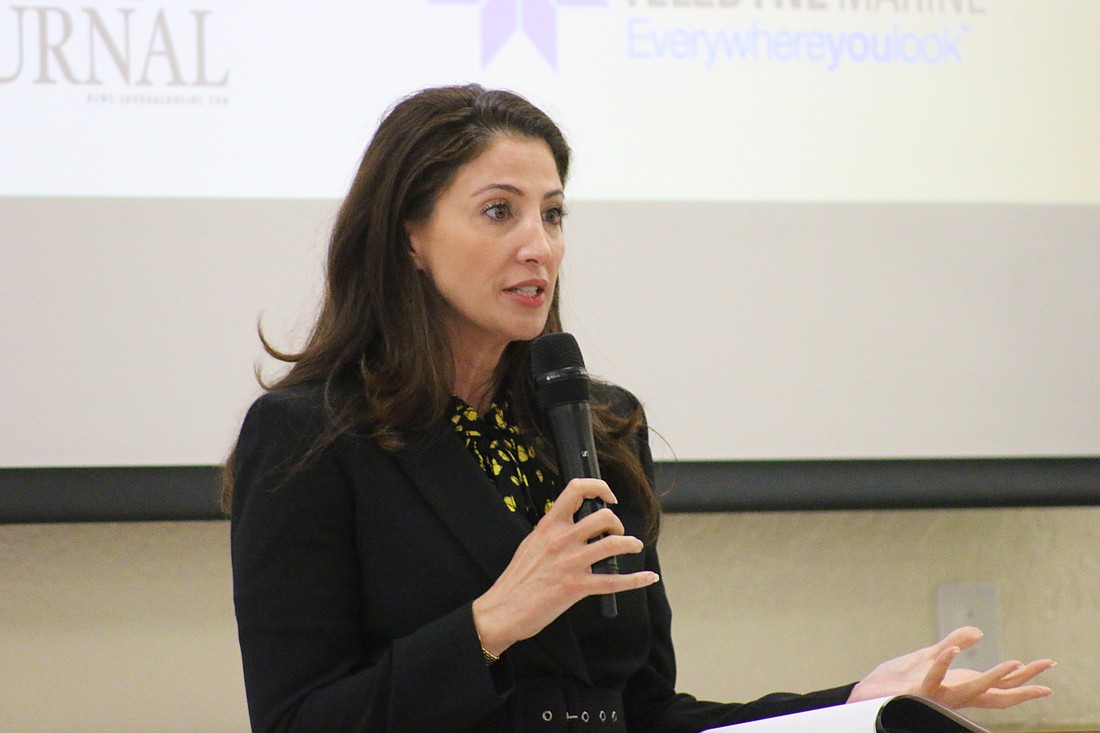- April 18, 2024
-
-
Loading

Loading

By 2100, swaths of Volusia County's coastal cities — including Ormond Beach, Daytona Beach and New Smyrna Beach — could be underwater due to rising sea levels.
That's based on 2017 projections by the National Oceanic and Atmospheric Administration that estimate sea level could rise up to eight feet in about 80 years.
"It's a little bit sobering, and hopefully, this never comes to pass," said Ginger Adair, county director of environmental management.
However, to prevent this scenario, prevention and adaptation measures must be put into place now, Adair continued at the Tallahassee Speaker Series event titled, "Resilience: Balancing Environment and Economy" held at Bethune-Cookman University on Tuesday, Nov. 12. In addition to Adair, the estimated 30 people in attendance also heard from Jenifer Rupert of the East Central Florida Regional Planning Council and Julia Nesheiwat, the state's new chief of resilience officer. As the state's first person to occupy the newly-created position, Nesheiwat is tasked with preparing Florida for the environmental, physical and economic impacts of sea level rise, according to a press release by the office of Gov. Ron DeSantis.
But what is resilience?
Rupert defined it as the ability to "bounce forward," absorb, recover and get better in the face of short-term shocks, like hurricanes and infrastructure failures, and long-term stressors, like affordable housing and shifting economic trends.
"It is the common ground that all of our local jurisdictions across all of our eight counties really have to understand and adapt to," Rupert said. The East Central Florida Regional Planning Council includes representatives from Volusia, Brevard, Lake, Marion, Orange, Osceola, Seminole and Sumter counties.
Nesheiwat, a Stetson graduate who is also a former U.S. Army officer, said being a witness to the 2011 Fukushima tsunami in Japan inspired her research into resilience, especially as it relates to natural disasters. As Floridians, she said we are seeing impacts of rising sea levels with stronger storms "front and center." While the state has great standards when it comes to hardening against strong winds, Nesheiwat said, standards to get ahead of flooding issues are not up to par.
That's something she's hoping to take on. Nesheiwat wants to build a repository of best practices for the state, as well as one for "lessons learned." She also hopes to use her new position to accelerate environmental projects throughout the state. From a federal standpoint, she aims to find ways to make Florida stand out to harness federal grants.
"It's all about the funding," Neisheiwat said. "That's the big kahuna at the end of the day."
At the local level, Adair said the county has put into place a Sustainability Action Plan as well as a 2017 plan called Resilient Volusia, which was prepared by the East Central Florida Regional Planning Council, to assess ways to build resiliency against flooding and sea level rise.